Introduction to Boulders Beach Penguins
Before my trip to South Africa, I had no idea you didn’t need to brave the freezing cold of Antarctica to see penguins. Yes, you heard that right, you just need to fly to South Africa.
Penguins at Boulders Beach in Cape Town! Who knew? I certainly didn’t, and discovering this fact instantly made it the number one item on my South African adventure list.
Forget the Big Five—lion, leopard, rhinoceros, elephant, and African buffalo. Or giraffe and zebra for that matter. Give me the penguins instead!
From that moment on it was all about the Boulders Beach penguins! 🐧
Before we embarked on a road trip to Durban (which, spoiler alert, turned into a detour to Johannesburg), we had a couple of days to explore Cape Town. And guess what? Visiting the beautiful Boulders Beach penguin colony was at the very top of my bucket list. No Cape Town itinerary would be complete without it. So, off we went!
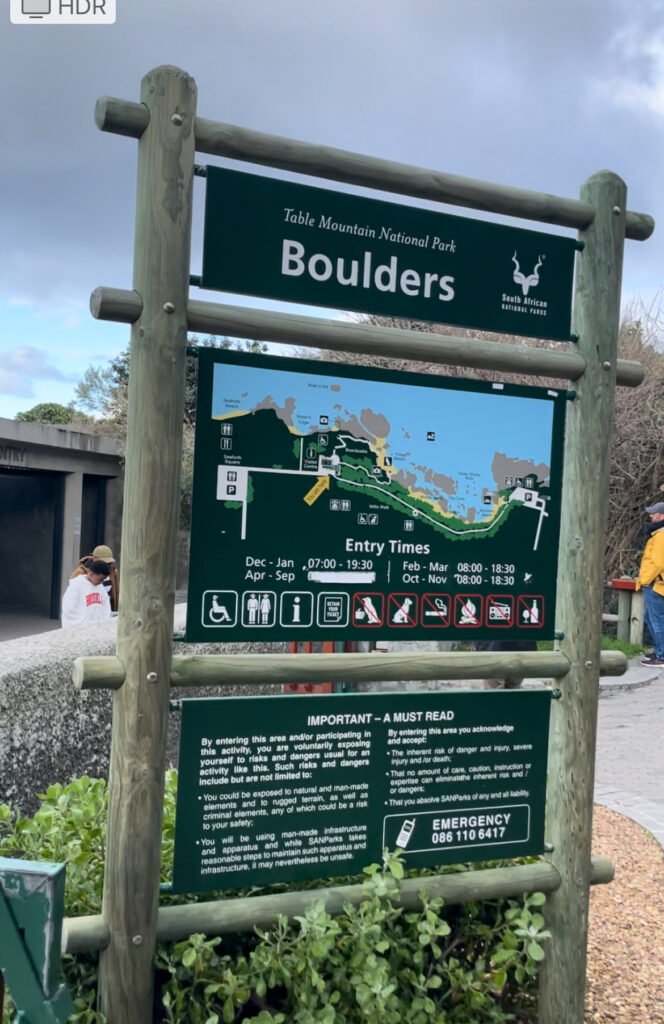
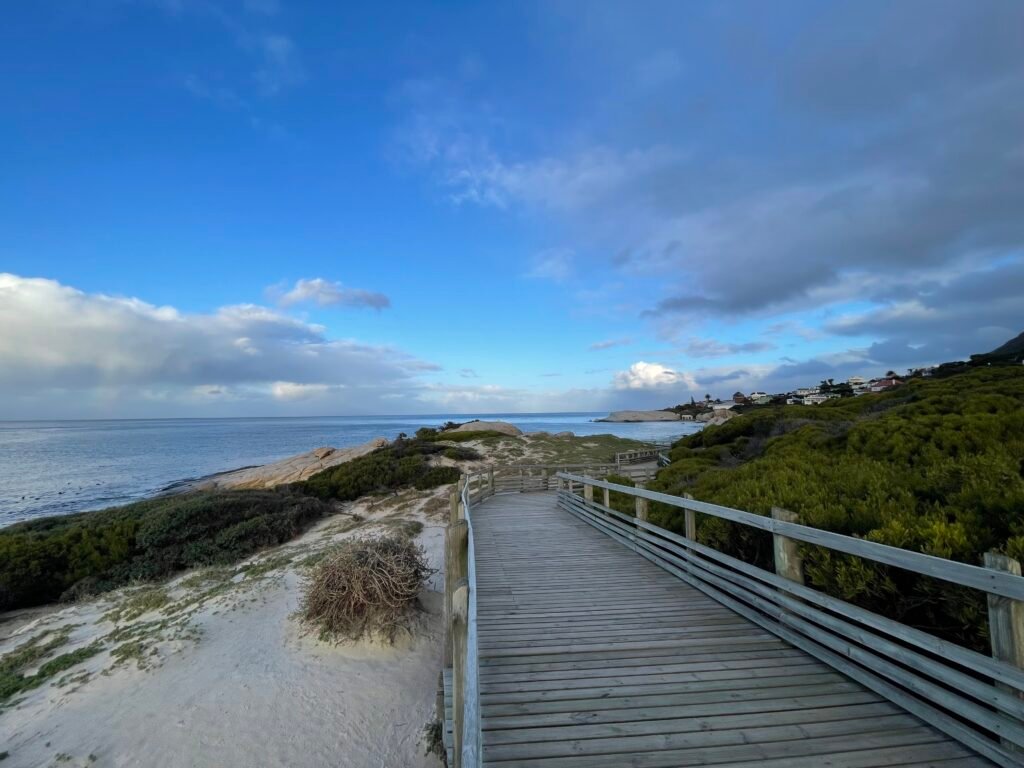
Where to See Penguins in (South) Africa
According to the info board at Boulders Beach, most African penguins breed on islands off the coasts of South Africa and Namibia. But there are two land-based colonies you can visit in South Africa: Boulders Beach in Simon’s Town on the Cape Peninsula and Stony Point in Betty’s Bay.
Facts About (African) Penguins:
- African Penguins are sadly listed as endangered in the South African Red Data Book.
- Penguins are birds—yes, birds!—even though they can’t fly. They have feathers, lay eggs, and are warm-blooded.
- Their wings have evolved into flippers, making them excellent swimmers, zipping through the water at speeds of up to 20 km/h.
- They were once called “Jackass Penguins” because of their braying call, which sounds a lot like a donkey.
- Penguins mate for life! About 80-90% of penguin pairs stick together for life and return to the same nest each breeding season.
- In the wild, penguins typically live for 10-15 years.
- Both penguin parents share the responsibility of incubating the eggs, taking turns over a 40-day period.
- The biggest penguins are the Emperor Penguins, weighing in at 20-40 kg, while African Penguins are much smaller, tipping the scales at just 3-5 kg.

Tips for Visiting Boulders Beach
Visit in the Right Season
When planning your visit, consider two things: the number of tourists and the number of penguins. Summer in South Africa, which runs from November to March, is peak tourist season. Penguins are most active between March and May.
| May is your sweet spot—lots of penguins, fewer tourists. |
But don’t worry if you visit outside of this window. I went in August (South African winter), and there were still plenty of penguins to see, with hardly any tourists around. Just be prepared for a bit of the chill wind!
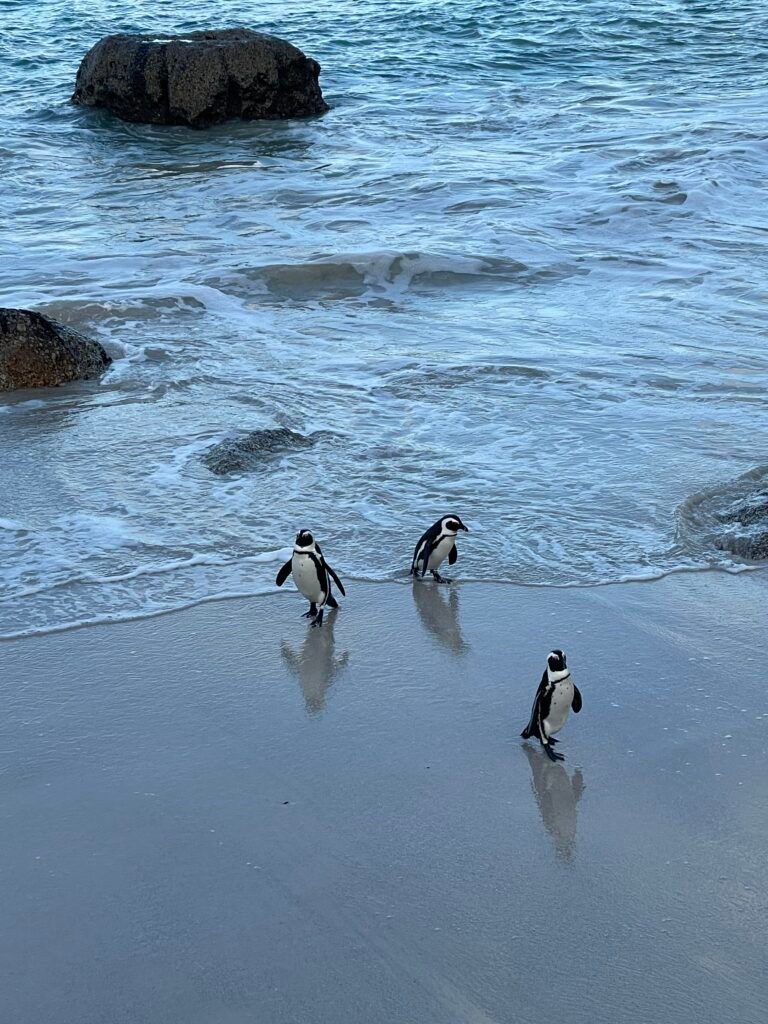
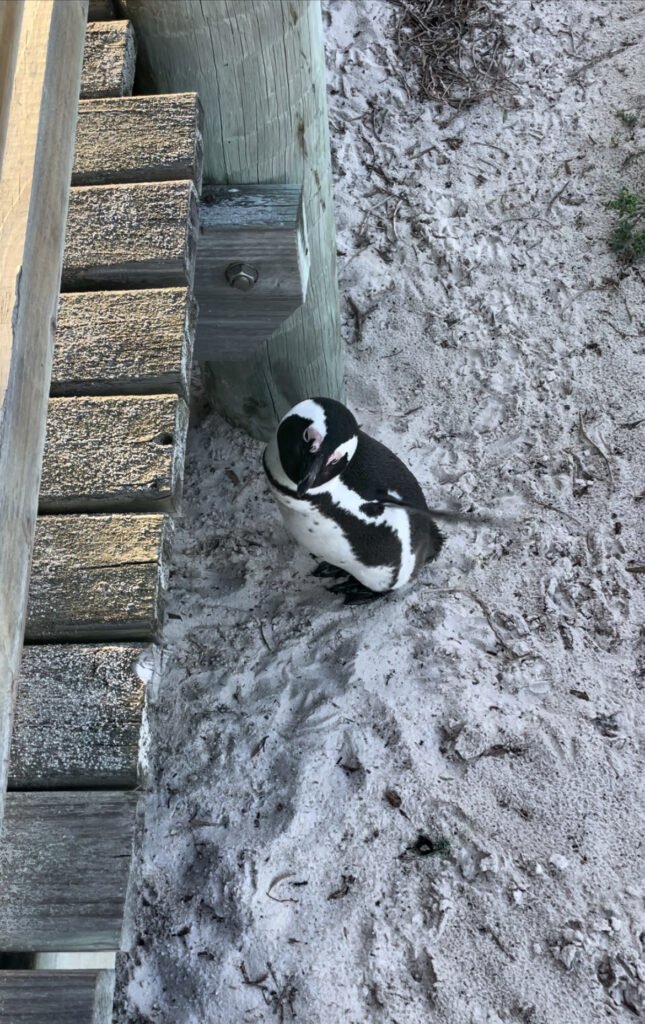
Be on Time
Remember, penguins head out to sea to hunt in the morning and return in the afternoon.
| The best time to catch them is either early morning before they leave or late afternoon when they return. |
Don’t feed the penguins
Once you’re lucky enough to spot them, be a responsible visitor—observe, don’t interfere.
| Don’t feed them or try to touch them. |
Their sharp beaks are no joke, and you don’t want to find out just how powerful they are! Respect the wildlife, follow the park guidelines, and keep your hands to yourself (or on your camera).
Take Your Time to Explore:
Don’t rush. Take your time to wander around, watch the penguins, read the info boards, visit the Boulders Beach Visitor Centre, and explore both viewing areas. Unfortunately, I didn’t know better and arrived a bit late. I saw plenty of penguins, but I missed out on the second viewing point and the chance to fully explore the site.
Pack a Picnic:
Boulders Beach in Cape Town is a perfect spot for a picnic. There are designated picnic areas nearby where you can enjoy a meal while soaking in the stunning views of the beach and the ocean. Just make sure to clean up after yourself to keep the environment pristine.
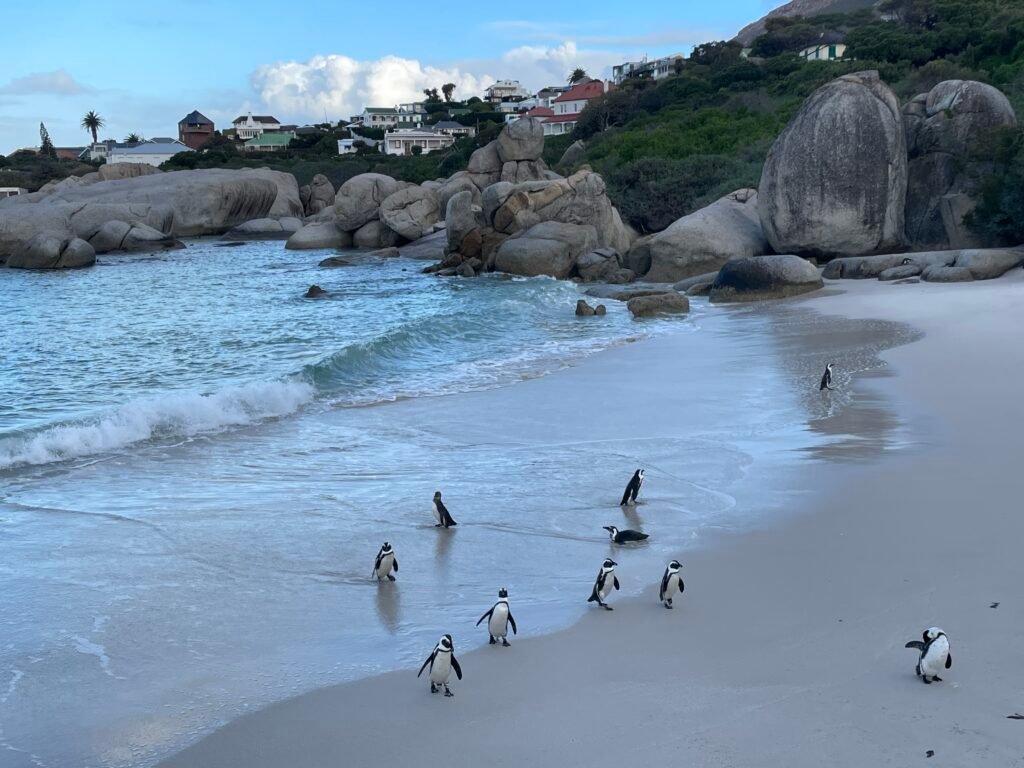
Technical Information for Boulders Beach Penguin Colony
Distance from Cape Town: 41.8 km (28 miles)
Entry fee (1. 11. 2023 – 31. 10. 2024)
| Adults (12+ years) | Children (2 – 11 years) | |
|---|---|---|
| South African Citizens and Residents | R45 | R25 |
| SADC Nationals | R95 | R50 |
| International (non-South African) Citizens | R190 | R95 |
Opening hours:
Dec –Jan: 07:00 – 19.30
Feb – April: 08:00 -18:30
May – Sept: 08:00 – 17:00
Oct – Nov: 08:00 – 18:30
Contact Number:
Boulders Visitor Centre Phone Number:
+27 (0)21 786 2329
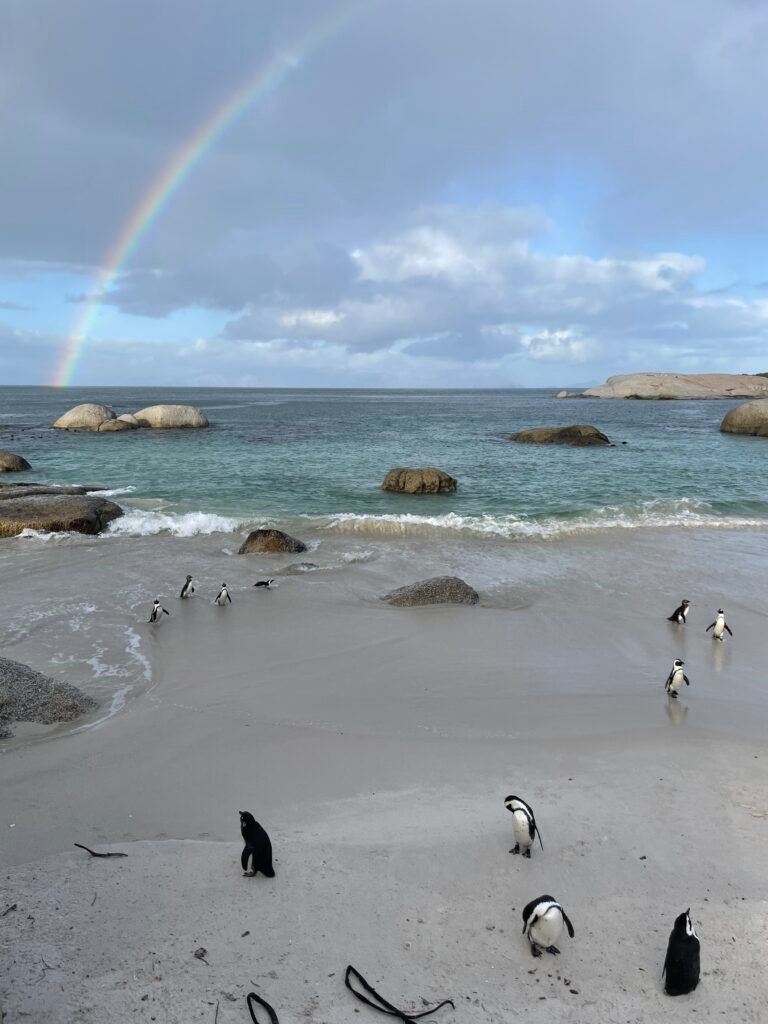
Once there, what can you also visit in the area:
Simons Town, Muizenberg Beach, Cape Point, and Cape of Good Hope
If you have enough of nature and want to explore the city, head out to the Bo-Kaap district in Cape Town and explore the vibrant colorful neighborhood.
Conclusion
For the end. Visiting Boulders Beach is not just about checking off a tourist destination—it’s about experiencing something truly unique. The sight of Boulders Beach penguins in Cape Town waddling around their natural habitat is unforgettable and offers a rare opportunity to see these charming creatures up close. From the fascinating behaviors of the penguins to the stunning scenery of the beach itself, this trip is sure to leave a lasting impression.
Whether you’re a nature lover, a photographer, or simply looking for a relaxing day out, Boulders Beach has something for everyone. The combination of picturesque views, tranquil waters, and the presence of the endangered African penguins creates a magical experience that stands out among the many attractions in South Africa.
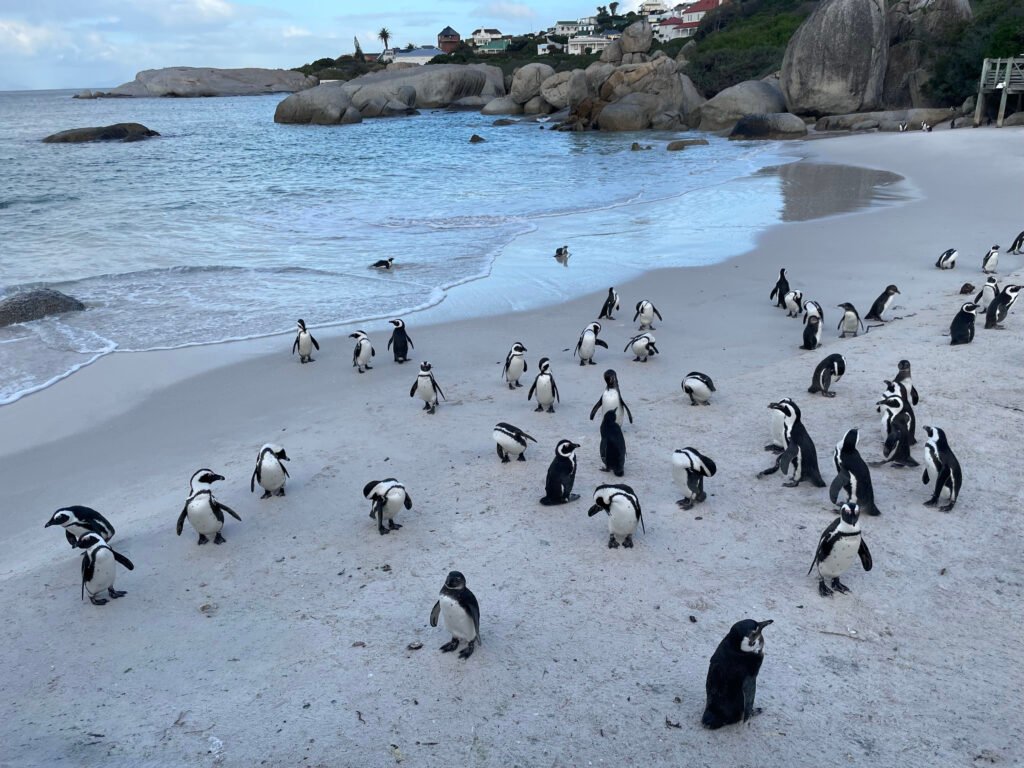
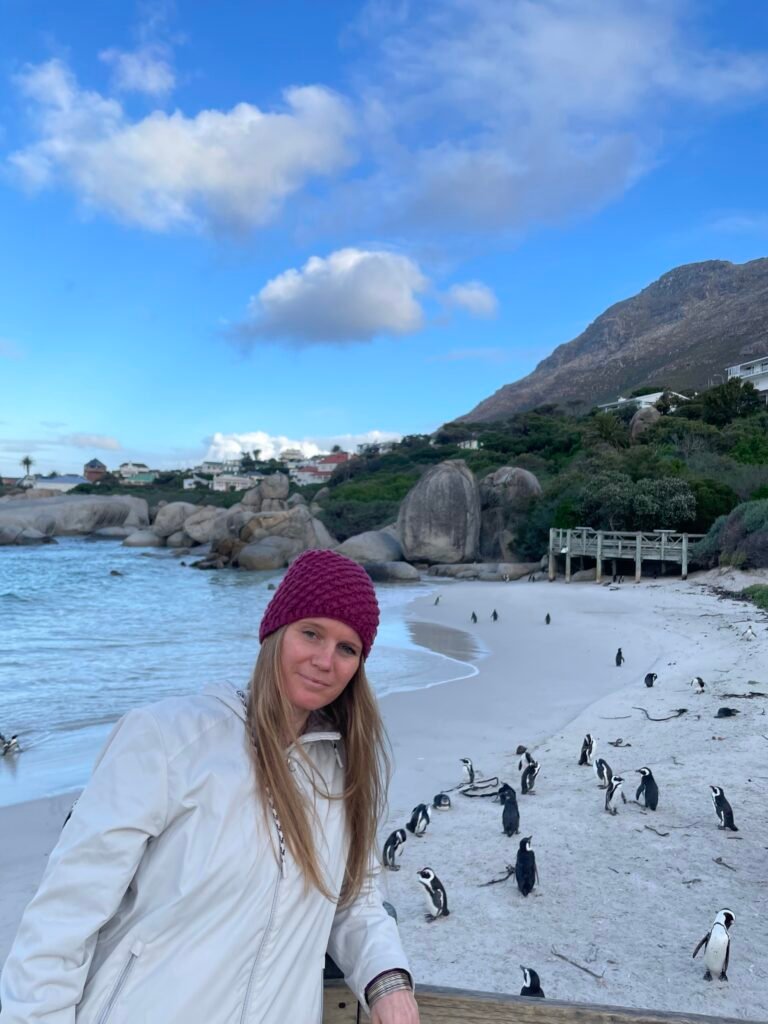
Just remember to plan your visit well—consider the best time to go, be respectful of the wildlife, and take your time exploring. The Boulders Beach penguin colony is a treasure worth savoring, and with the right approach, you’ll leave with memories and photos that are nothing short of extraordinary.
Enjoy!
With lots of warm love
T.


0 Comments